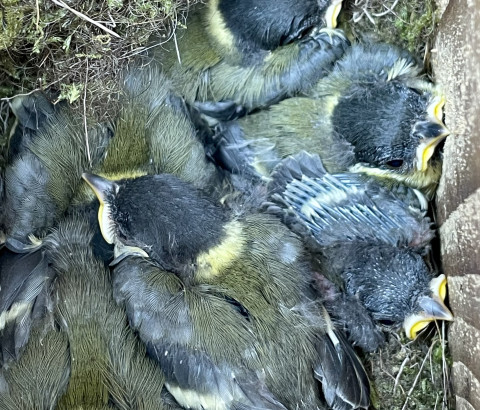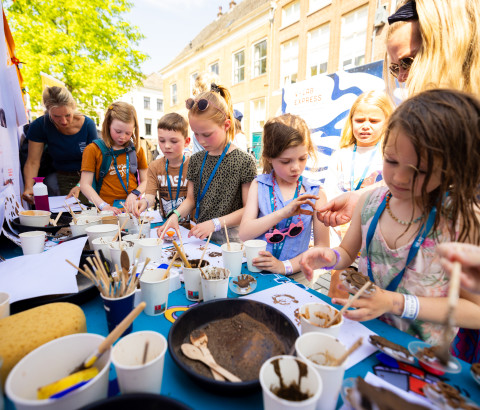Mitja Zdouc,
Kai Blin,
Nico L.L. Louwen,
Jorge Carlos Navarro-Muñoz,
Catarina Loureiro,
Chantal D Bader,
Constance B Bailey,
Lena Barra,
Thomas J. Booth,
Kenan A J Bozhüyük,
José D D Cediel-Becerra,
Zachary Charlop-Powers,
Marc G. Chevrette,
Yit Heng Chooi,
Paul M D'Agostino,
Tristan de Rond,
Elena Del Pup,
Katherine R. Duncan,
Wenjia Gu,
Novriyandi Hanif,
Eric J N Helfrich,
Matthew Jenner,
Yohei Katsuyama,
Aleksandra Korenskaia,
Daniel Krug,
Vincent Libis,
George A Lund,
Shrikant Mantri,
Kalindi D Morgan,
Charlotte Owen,
Chin-Soon Phan,
Benjamin Philmus,
Zachary L. Reitz,
Serina L. Robinson,
Kumar Saurabh Singh,
Robin Teufel,
Yaojun Tong,
Fidele Tugizimana,
Dana Ulanova,
Jaclyn M. Winter,
César Aguilar,
Daniel Y Akiyama,
Suhad A.A. Al-Salihi,
Mohammad Alanjary,
Fabrizio Alberti,
Gajender Aleti,
Shumukh A Alharthi,
Mariela Y Arias Rojo,
Amr A Arishi,
Hannah E. Augustijn,
Nicole E. Avalon,
J. Abraham Avelar-Rivas,
Kyle K Axt,
Hellen B Barbieri,
Julio Cesar J Barbosa,
Lucas Gabriel Barboza Segato,
Susanna E Barrett,
Martin Baunach,
Christine Beemelmanns,
Dardan Beqaj,
Tim Berger,
Jordan Bernaldo-Agüero,
Sandra M Bettenbühl,
Vincent A. Bielinski,
Friederike Biermann,
Ricardo M Borges,
Rainer Borriss,
Milena Breitenbach,
Kevin M. Bretscher,
Michael W Brigham,
Larissa Buedenbender,
Brodie W Bulcock,
Carolina Cano-Prieto,
João Capela,
Victor J Carrion,
Riley S Carter,
Raquel Castelo-Branco,
Gabriel Castro-Falcón,
Fernanda O. Chagas,
Esteban Charria-Girón,
Ayesha Ahmed Chaudhri,
Vasvi Chaudhry,
Hyukjae Choi,
Yukyung Choi,
Roya Choupannejad,
Jakub Chromy,
Melinda S Chue Donahey,
Jérôme Collemare,
Jack A Connolly,
Kaitlin E Creamer,
Max Crüsemann,
Andres Arredondo Cruz,
Andres Cumsille,
Jean-Felix Dallery,
Luis Caleb Damas-Ramos,
Tito Damiani,
Martinus de Kruijff,
Belén Delgado Martín,
Gerardo Della Sala,
Jelle Dillen,
Drew T. Doering,
Shravan R Dommaraju,
Suhan Durusu,
Susan Egbert,
Mark Ellerhorst,
Baptiste Faussurier,
Artem Fetter,
Marc Feuermann,
David P Fewer,
Jonathan Foldi,
Andri Frediansyah,
Erin A Garza,
Athina Gavriilidou,
Andrea Gentile,
Jennifer Gerke,
Hans Gerstmans,
Juan Pablo Gomez-Escribano,
Luz A González-Salazar,
Natalie E Grayson,
Claudio Greco,
Juan E Gris Gomez,
Sebastian Guerra,
Shaday Guerrero Flores,
Alexey Gurevich,
Karina Gutiérrez-García,
Lauren Hart,
Kristina Haslinger,
Beibei He,
Teo Hebra,
Jethro L Hemmann,
Hindra Hindra,
Lars Höing,
Darren C Holland,
Jonathan E Holme,
Therese Horch,
Pavlo Hrab,
Jie Hu,
Thanh-Hau Huynh,
Ji-Yeon Hwang,
Riccardo Iacovelli,
Dumitrita Iftime,
Marianna Iorio,
Sidharth Jayachandran,
Eunah Jeong,
Jiayi Jing,
Jung J Jung,
Yuya Kakumu,
Edward Kalkreuter,
Kyo Bin Kang,
Sangwook Kang,
Wonyong Kim,
Geum Jin Kim,
Hyunwoo Kim,
Hyun Uk Kim,
Martin Klapper,
Robert A Koetsier,
Cassandra Kollten,
Ákos T. Kovács,
Yelyzaveta Kriukova,
Noel Kubach,
Aditya M. Kunjapur,
Aleksandra K Kushnareva,
Andreja Kust,
Jessica Lamber,
Martin Larralde,
Niels J Larsen,
Adrien P Launay,
Ngoc-Thao-Hien Le,
Sarah Lebeer,
Byung Tae Lee,
Kyungha Lee,
Katherine L Lev,
Shu-Ming Li,
Yong-Xin Li,
Cuauhtémoc Licona-Cassani,
Annette Lien,
Jing Liu,
Julius Adam V Lopez,
Nataliia V. Machushynets,
Marla I Macias,
Taifo Mahmud,
Matiss Maleckis,
Añadir Maharai Martinez-Martinez,
Yvonne Mast,
Marina F Maximo,
Christina M McBride,
Rose M McLellan,
Chrats Melkonian,
Aske Merrild,
Mikko Metsä-Ketelä,
Douglas A Mitchell,
Alison V Müller,
Giang-Son Nguyen,
Hera T Nguyen,
Timo H J Niedermeyer,
Julia H O'Hare,
Adam Ossowicki,
Bohdan O Ostash,
Hiroshi Otani,
Leo Padva,
Sunaina Paliyal,
Xinya Pan,
Mohit Panghal,
Dana S Parade,
Jiyoon Park,
Jonathan Parra,
Marcos Pedraza Rubio,
Huong T Pham,
Sacha J Pidot,
Jörn Piel,
Bita Pourmohsenin,
Malik Rakhmanov,
Sangeetha Ramesh,
Michelle H Rasmussen,
Adriana Rego,
Raphael Reher,
Andrew J Rice,
Augustin Rigolet,
Adriana Romero-Otero,
Luis Rodrigo Rosas-Becerra,
Pablo Y Rosiles,
Adriano Rutz,
Byeol Ryu,
Libby-Ann Sahadeo,
Murrel Saldanha,
Luca Salvi,
Eduardo Sánchez-Carvajal,
Christian Santos-Medellin,
Nicolau Sbaraini,
Sydney M Schoellhorn,
Clemens Schumm,
Ludek Sehnal,
Nelly Selem-Mojica,
Anjali D Shah,
Tania K Shishido,
Simon Sieber,
Velina Silviani,
Garima Singh,
Hemant Singh,
Nika Sokolova,
Eva C Sonnenschein,
Margherita Sosio,
Sven T Sowa,
Karin Steffen,
Evi Stegmann,
Alena B Streiff,
Alena Strüder,
Frank Surup,
Tiziana Svenningsen,
Douglas Sweeney,
Judit Szenei,
Azat Tagirdzhanov,
Bingyuan Tan,
Matthew J Tarnowski,
Barbara R Terlouw,
Thomas Rey,
Nicola U. Thome,
Laura Rosina Torres Ortega,
Thomas Tørring,
Marla Trindade,
Andrew W Truman,
Marie Tvilum,
Daniel W Udwary,
Christoph Ulbricht,
Lisa Vader,
Gilles van Wezel,
Max Walmsley,
Randika Warnasinghe,
Heiner G Weddeling,
Angus N M Weir,
Katherine Williams,
Sam E. Williams,
Thomas E. Witte,
Steffaney M Wood Rocca,
Keith Yamada,
Dong Yang,
Dongsoo Yang,
Jingwei Yu,
Zhenyi Zhou,
Nadine Ziemert,
Lukas Zimmer,
Alina Zimmermann,
Christian Zimmermann,
Justin J J van der Hooft,
Roger G Linington,
Tilmann Weber,
Marnix H Medema

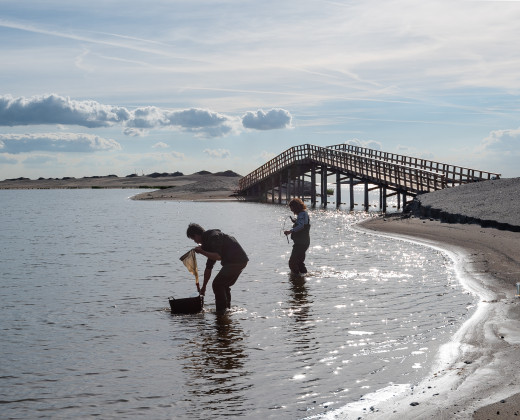



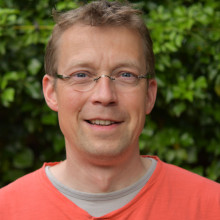





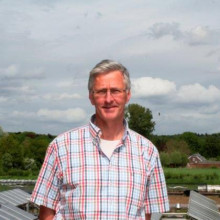
 Read more
Read more Read more
Read more Read more
Read more Read more
Read more Read more
Read more